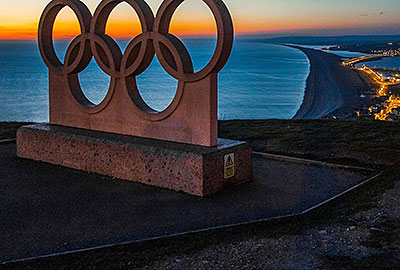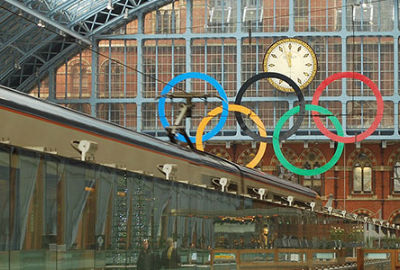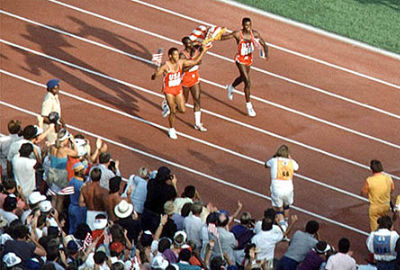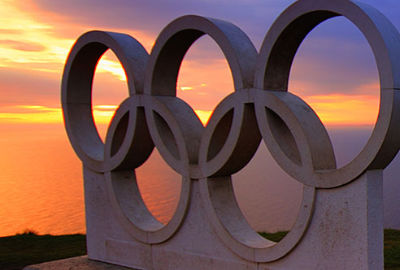

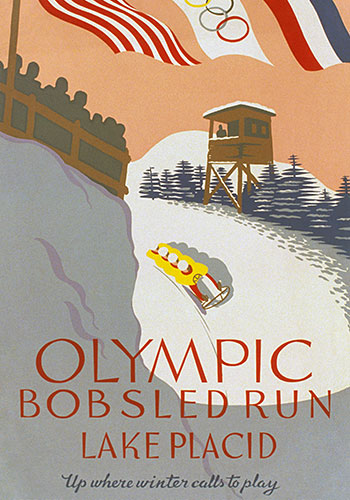

History of the Winter Olympics
- ArticlesandContent.com (CIRCA 2005)
- /
- Oct 8, 2021 (written 2005)
At their 1925 congress the IOC decided to establish the Winter Olympics as its own institution separate from the summer games. One year later, in 1926, the Marquis de Polignac proposed that the IOC designate the 1924 Olympics “International Winter Sports Week” as the very first Winter Olympic Games.
The history of the Winter Olympics is a shaky one indeed. As early as 1894 when the International Olympic Committee (IOC) was established, ice skating was proposed for the Olympic program. In spite of this, it was not until 1908, fourteen years later, that an ice-skating event was held at the Summer Olympics in London. This first Olympic figure skating event was won with little difficulty by the Swedish champion Ulrich Salchow, the skater who invented the backwards one revolution jump that bears his name, and Madge Syers of Britain. The German competitors, Anna Hubler and Heinrich Berger, won the pairs event.
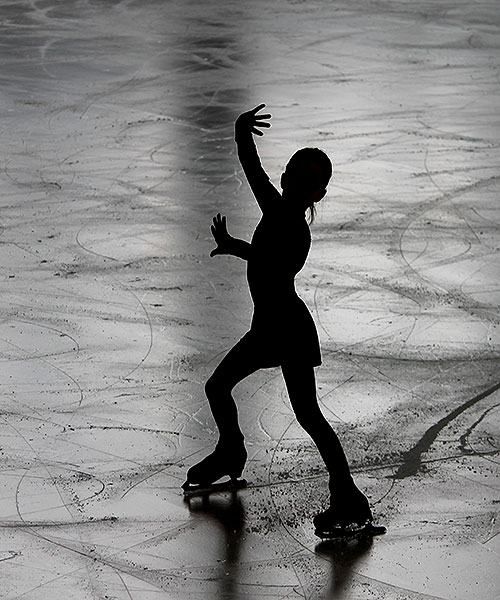
Although the 1908 figure skating proved itself popular, the development of the Winter Olympics was held back by the olympic organizers when they turned down a proposal from Count Eugenio Brunetta d’Usseaux, an Italian, to stage a week of winter sports during the 1912 Summer Olympics, which ironically were held in Stockholm. Focus was instead placed on the Nordic Games, a quadrannial winter sports championship exclusive to competitors from the nordic countries.
Another major setback to the establishment of the Winter Olympics came in what would have been the 1916 Olympics in Germany. A week in the Black Forest devoted entirely to winter sports and publicized as a “Skiing Olympia” to feature figure skating, speed skating, ice hockey, and Nordic skiing, was cancelled along with the rest of the Olympics due to the First World War.
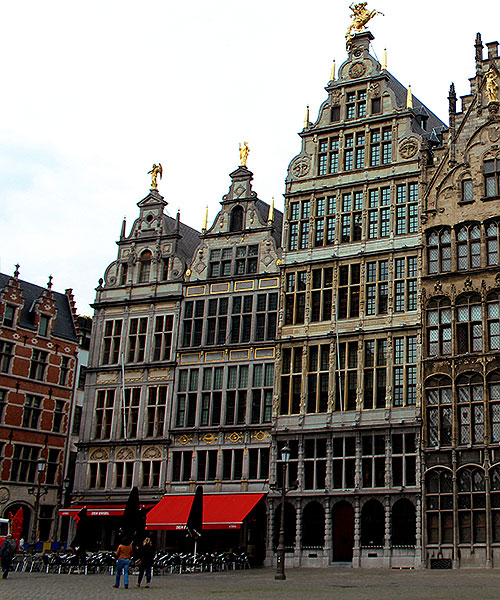
It was not until the 1920 Olympic Games in Antwerp that winter sports made another Olympic appearance in the form of figure skating. Ice hockey at this time also made an Olympic debut. Gillis Grafstrom of Sweden, along with Magda Julin, won the individual honors. The top pair was Walter Jakobsson and Ludovika. It was Canada that swept the gold medal in their victory over the United States. Czechoslovakia’s team took the bronze.
The following year the IOC held a congress where it was decided that the 1924 Olympics scheduled in France would include an International Winter Sports Week featuring figure skating, speed skating, ice hockey, Nordic skiing, and even bobsledding. Despite objections from Baron Pierre de Coubertin, founder of the Modern Olympics, and from the Scandinavian countries who from 1901-1926 staged the Nordic Games in Sweden every four years, the International Winter Sports Week took place in the town of Chamonix, in the Haute-Sacoie area of the French Alps, just an hour northeast of Grenoble. The events ran from January 25 to February 5 and featured over 258 athletes from 16 different countries competing in 16 events. At long last winter sports stepped unhindered to the international stage, and this time the fates were not against them.
The sixteen countries competing in the Winter Olympics, like most Summer Olympic participants at this time, were European and North American, including Belgium, France, Canada, Sweden, Great Britain, The United States, Switzerland, Austria, Finland, and Norway among the medal recipients. As one would suspect, the Nordic countries steamrolled the competition. Norway and Finland alone went home with 27 of the 43 medals up for grabs, mostly from the Nordic events and speed skating races. Three gold medals were won by Finland’s Clas Thunberg and Thorleif Haug, a Norwegian Nordic skier and jumper. There were also two other memorable medals awarded through these games. The first was a gold given to American speed skater Charles Jewtraw in an upset victory in the 500 meter competition. This win was particularly dramatic since the event was the first of the International Winter Sports Week, thus making Charles Jewtraw the first Winter Olympics gold medal champion. The other medal, a bronze in the ski jump, was the very last medal to be awarded from these games. Due to a scoring error, American Anders Haugen did not receive his prize until 1974 at the age of 83.
It was also at this International Winter Sports Week where Canada solidified its reputation as perennial champions of the ice-hockey ring. In their first four games they defeated Switzerland 33-0 before moving on to an almost embarrasing 30-0 victory over Czhechoslovakia. Sweden and Great Britain were likewise swept away at 22-0 and 19-2 respectively before the Canadians defeated the United States with a respectable 6-1 lead. So popular and exciting were the events and competitors at this eleven-day International Winter Sports Week that any doubts the IOC had about establishing a separate Winter Olympic Games were erased. At their 1925 congress the IOC decided to establish the Winter Olympics as its own institution separate from the summer games. One year later, in 1926, the Marquis de Polignac proposed that the IOC designate the 1924 Olympics “International Winter Sports Week” as the very first Winter Olympic Games. Once again Baron Pierre de Coubertin, also a Frenchman, was opposed to the idea, but once again he was defeated. Siding with the Baron, the IOC agreed to retroactively designate the winter games in Chamonix the very first Winter Olympics.
This decision had of course as much to do with the rising popularity of winter sports at the time as it did to the fact that winter sports, by their very nature, require specific environmental conditions. In separating the Winter Olympics from their summertime counterparts, the IOC made the Olympics accessible to those winter sports taking place outside of the ring, i.e. the various iterations of skiing, bobsledding, and more recently, snowboarding.
The establishment of the Winter Olympics brought the IOC much praise, and the popularity of winter sports continued to rise. The Winter Olympic Games were finally formally established in 1928, and were thereafter held every four years, barring the hiatus imposed by World War II. In 1994 the Winter Olympics were moved so that the Summer and Winter Olympics would fall two years apart from each other.
Countries with cold climatic regions were viewed as getting an unfair advantage in the whole package deal, as these regions were abundant with snow and icy weather. So, it was a well - drawn conclusion that these countries would abundantly clinch all the skiing and skating games, as they were almost a daily activity in these countries. The Scandinavian countries, on their part, feared that the games would threaten their own Nordic games, which were held once in four years since 1901.
The apprehension was dispelled in 1924, when the International Olympic Committee, IOC, organized the ‘International Sports Week’. Scandinavia won 28 out of the 43 medals and the event began to grab a fair amount of public attention. The event was christened as the First Winter Olympic Games. The historic 1924 Winter Olympic Games had events lined up from figure skating and speed skating to ice hockey. The venue chosen was Chamoix, France.
About 294 competitors had joined the fray. Charles Jewtraw of the United States won the first gold medal, in the 500-meter speed skating event, but the hero undoubtedly was Thorleif Haug of Norway. Haug won three gold medals, for the 18 and 50-kilometer cross-country skiing events and for the Nordic combined event. The legendary Norwegian figure skater Sonja Henie made her debut in the 1924 Games at the age of 12. Thereafter, there was no stopping this icon, who took the Winter Olympics world by storm by winning in 1928, 1932 and 1936. Her popularity zoomed to dizzying heights and she appeared in her first Hollywood movie in 1937.
The Second World War led to the postponement of two successive Winter Olympic Games in 1940 and 1944. Japan and Germany were conspicuous by their absence from the Winter Olympics, which were held in 1948 in St. Moritz, Switzerland. It was a cherished feeling to see that the games had survived the vagaries of the world war and the refreshed Olympic spirit and the competitive zeal of the sportsmen and women made up for the 12-year hiatus.
1964 in Innsbruck, Austria
In the year 1964 in Innsbruck, Austria, the world was pleasantly surprised when East and West Germany entered as one team. These games had to face a challenge where the scheduled venue was faced with a lack of snow. In a panic-stricken state, the Austrian army carved 20,000 blocks of ice from a mountaintop and also hauled 60,000 cubic meters of fresh snow to the alpine venues.
1976 Winter Olympics to Denver
The IOC then conferred the rights to hold the 1976 Winter Olympics to Denver, Colorado, but after two years of preparation and financial haggling, the games had to be wrapped up because of the refusal for sponsorship to fund the major events through public taxes. Innsbruck then stepped in and volunteered to host the Winter Olympics after twelve years, and the games went off peacefully and without any financial hurdles.
1984 Winter Olympics in Sarajevo
The 1984 Winter Olympics had a historic statement to make. For the first time, the event was going to be held in a communist country. As Sarajevo, Yugoslavia hosted the games, a record of forty-nine countries and more than 1500 contestants participated in the gala event. There were no signs of the civil war that was going to strike the nation a few years later. No one would have imagined that the site of the slalom races would serve as a Serb military installation and the bobsled run would be used as an artillery position for Serbian guerillas in the years to come.
Calgary's Olympics in 1988
Calgary's Olympics in 1988 had a charm of its own as far as the games were concerned. For the first time, the alpine events were staged on artificial snow. The venue received mixed reaction, as some people did not appreciate the idea of the having the event in an artificial surrounding. In the year 1994, the winter games had an alternative plan scheduled in their scheme of things. Until the year 1994, the games would always fall in the same year as the summer events. There was a revival in the policy and the IOC let Norway host the game two years after the events were held in Albertville. The Lillehammer Winter Olympics in Norway began with a lot of pomp and splendor but the financial spending went overboard as Lillehammer ended up at about $850 million over budget, due to the government’s over-optimism and lack of adequate infrastructure.
The 1998 Nagano Winter Olympics
The 1998 Nagano Winter Olympics was another triumph for the sports world, and the games saw a lot of exciting events added to the family of winter games. Snowboarding began its debut here and the sports personalities had their share of controversies. A lot of fans would recall the time when the Canadian Ross Rebagliati was stripped of his gold medal after testing positive for traces of marijuana. The snowboarder was awarded his medal back after the IOC's decision was reversed, and the hype and the mockery of the whole event resulted in a lot of public acclaim and ever-increasing popularity for Rebagliati. Curling and women's hockey were also given their due as official sports and Japan was welcomed as a generous host to the history of Winter Olympics.

The 2002 Winter Olympics
The 2002 winter Olympics, held in Salt Lake city, Utah, were glamorous but dogged with controversies all the same. The event saw three cross-country skiers excluded from the Games on the final day. The international Olympic Committee president Jacques Rogge questioned the "moral authority" of gold medalists Johann Muehlegg and Olga Danilova. 2500 athletes attended the event and the games were grand and the spirit was more competitive than ever before.
On 19 June 1999 in Seoul, Korea, the 109th IOC Session elected Turin, Italy as the Host City for the XX Olympic Winter Games in 2006 from a total of six candidate cities. The White House announced that First Lady Laura Bush will lead the official U.S. delegation to the Winter Olympics in Turin. The Olympic Winter Games will be held in Turin from February 10th to February 26th. The Winter Games will be comprised of seven different sports and 15 different categories, which will be played out in eight different competition sites. Around 2,500 athletes, 675 judges and umpires and one million spectators are expected to participate in this 20th edition of the Winter Games.
